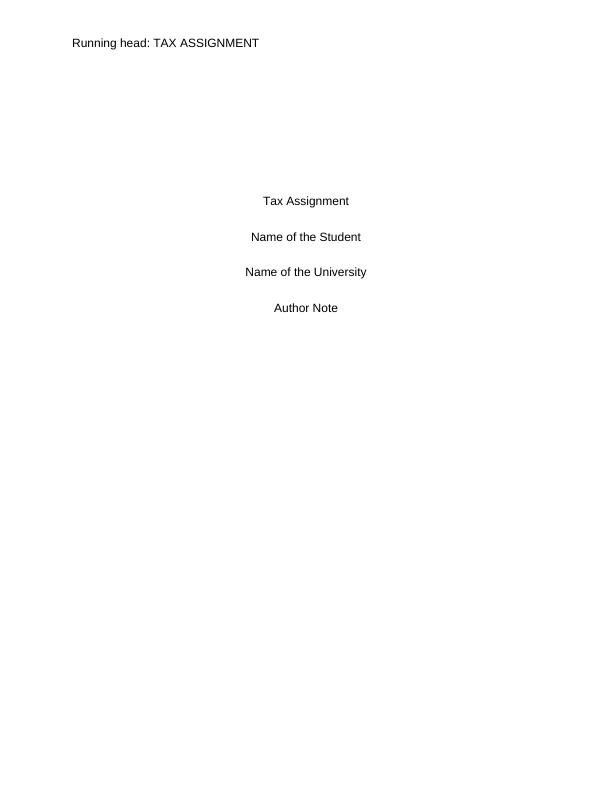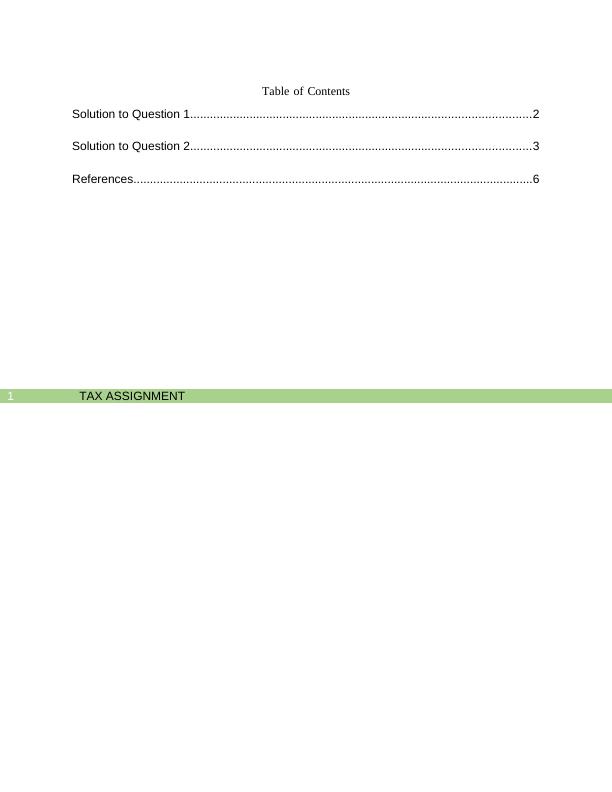Tax Assignment: Capital Gains Taxable and Capital Allowance
7 Pages2465 Words196 Views
Added on 2022-11-13
About This Document
This assignment provides advice on capital gains taxable of Jasmine, a resident of Australia. It also calculates the cost of machinery that would be used in providing capital allowance on the machinery to John. The date from which John can start calculating the decrease in the value of the asset is also determined.
Tax Assignment: Capital Gains Taxable and Capital Allowance
Added on 2022-11-13
ShareRelated Documents
End of preview
Want to access all the pages? Upload your documents or become a member.
Taxation Law: Capital Gains Tax and Depreciation of Assets
|7
|2310
|235
Taxation Law: Capital Gains Consequences and Capital Allowances
|6
|2264
|175
Taxation Law - Individual Assignment
|7
|2385
|195
Australia Taxation Law: Capital Gains Tax and Capital Allowance
|9
|2447
|68
Case Study on Taxation Law 2022
|9
|2328
|11
Sale of family home: Capital gains
|12
|2932
|264



